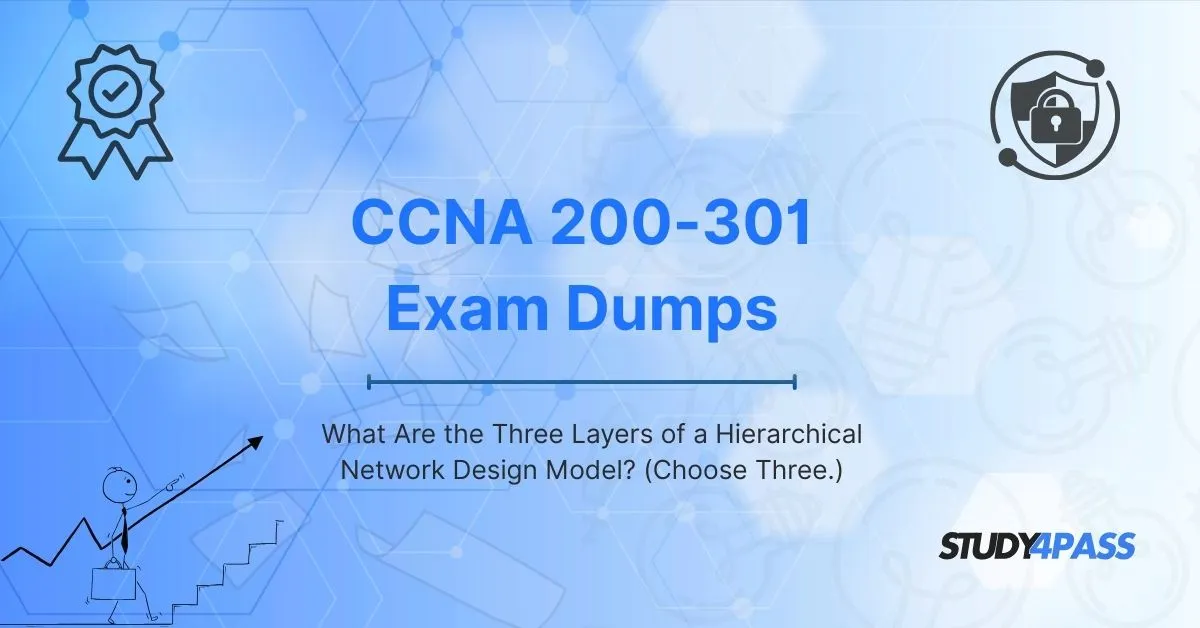Introduction To CCNA 200-301 Exam Prep Practice Test
In the world of networking, designing a scalable, efficient, and secure infrastructure is crucial. The hierarchical network design model is a widely adopted approach that helps organizations build robust networks. If you're preparing for the CCNA 200-301 exam, understanding this model is essential.
Many candidates rely on trusted resources like Study4Pass for accurate and up-to-date study materials, including CCNA 200-301 Dxam Exam Prep Practice Tests, to reinforce their knowledge. In this blog, we will explore the three layers of the hierarchical network design model and how they contribute to a well-structured network.
Why Use a Hierarchical Network Design Model?
Before diving into the layers, let’s understand why this model is so effective:
Scalability: Allows networks to grow without major redesigns.
Performance: Reduces bottlenecks by distributing traffic efficiently.
Security: Enables better control and segmentation.
Manageability: Simplifies troubleshooting and maintenance.
For CCNA 200-301 exam aspirants, mastering this concept is key to answering related questions correctly. Using CCNA 200-301 Certification from Study4Pass can help reinforce these concepts with real-world examples and practice questions.
The Three Layers of the Hierarchical Network Design Model
The hierarchical network model consists of three layers:
1. Core Layer
2. Distribution Layer
3. Access Layer
Each layer has a specific function, ensuring optimal network performance. Let’s break them down.
1. Core Layer – The High-Speed Backbone
The Core Layer is the backbone of the network, responsible for:
- High-speed data transfer between different parts of the network.
- Minimal latency to ensure fast communication.
- Redundancy and reliability to prevent downtime.
Key Characteristics:
Fast Switching: Uses high-performance routers and switches.
No Packet Manipulation: Avoids filtering or modifying packets to maintain speed.
Redundant Paths: Ensures continuous connectivity even if a link fails.
For CCNA 200-301 exam preparation, remember that the Core Layer focuses on speed and reliability, not security or policy enforcement.
2. Distribution Layer – The Mediator
The Distribution Layer acts as a bridge between the Core and Access Layers. Its primary functions include:
- Routing and filtering traffic based on policies.
- Providing segmentation (VLANs, subnets).
- Aggregating connections from Access Layer devices.
Key Characteristics:
Policy Enforcement: Implements security (ACLs, firewalls).
Traffic Control: Manages QoS (Quality of Service) for priority traffic.
Route Summarization: Reduces routing overhead.
When using CCNA 200-301 exam prep practice test, you’ll often see questions about how the Distribution Layer handles VLAN routing and access control.
3. Access Layer – The Endpoint Connection
The Access Layer is where end devices (computers, phones, printers) connect to the network. Its roles include:
- Providing user access to the network.
- Port security to prevent unauthorized access.
- Bandwidth management for connected devices.
Key Characteristics:
Switch Port Configuration: Enables features like STP (Spanning Tree Protocol).
Device Connectivity: Connects endpoints using switches and wireless APs.
Traffic Filtering: Basic security policies are applied here.
For the CCNA 200-301 exam, you should know that the Access Layer is where end-user devices interact with the network.
How Study4Pass Helps You Master These Concepts
Preparing for the CCNA 200-301 exam requires a deep understanding of network design principles. Study4Pass provides:
- High-quality CCNA 200-301 exam prep practice test with real exam-like questions.
- Detailed explanations of hierarchical network layers.
- Practice tests to assess your knowledge.
By using CCNA 200-301 exam prep practice test, you can test your understanding of the Core, Distribution, and Access Layers and identify areas for improvement.
Conclusion
Understanding the three layers of the hierarchical network design model is crucial for the CCNA 200-301 exam. The Core, Distribution, and Access Layers each play a unique role in ensuring a scalable, secure, and efficient network.
Special Discount: Offer Valid For Limited Time “Cisco 200-301 Exam Prep Practice Tests”
Actual exam question from Cisco's 200-301 Exam.
Sample Questions for Cisco 200-301 Exam Prep Practice Test
What is the main risk of using "CCNA 200-301 exam prep practice test" for certification preparation?
A) They guarantee a 100% passing score on the first attempt.
B) They may contain outdated or incorrect answers, violating Cisco’s exam policies.
C) They provide hands-on lab experience for practical skills.
D) They are officially endorsed by Cisco Systems.


